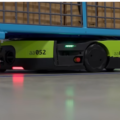In the world of robotics, one of the key aspects that sets apart a useful and engaging robot from a mere machine is its ability to interact with humans. Human-Robot Interaction (HRI) programming plays a vital role in designing robots that can effectively communicate, understand, and respond to human input. Whether it’s a social robot assisting in healthcare, an autonomous vehicle navigating busy streets, or a collaborative robot working alongside humans in a factory, HRI programming enables robots to become intuitive and user-friendly. In this beginner’s guide, we will explore the foundations of HRI programming and its importance in creating meaningful human-robot interactions.
Understanding the Basics of Human-Robot Interaction Programming: Human-Robot Interaction (HRI) programming involves creating algorithms and systems that enable robots to interact with humans in a natural and intuitive manner. It encompasses various aspects, including perception, cognition, and action. By programming robots to perceive human input, understand it, and respond accordingly, HRI programming lays the groundwork for effective human-robot communication and collaboration.
Designing Effective User Interfaces for Robots: A crucial element of HRI programming is designing user interfaces that facilitate seamless interaction between humans and robots. User-centered design principles come into play, ensuring that the interfaces are intuitive and easy to use. Visual, auditory, and tactile feedback mechanisms are incorporated to provide users with clear indications of the robot’s state and response. Well-designed user interfaces enhance the overall user experience and contribute to more meaningful interactions.
Natural Language Processing in HRI Programming: Natural Language Processing (NLP) enables robots to understand and process human speech. By implementing speech recognition algorithms, robots can interpret spoken commands and queries, allowing for intuitive communication with users. Additionally, speech synthesis techniques enable robots to respond through verbal output, enhancing the sense of interaction and engagement between humans and robots.
Gesture Recognition and Control in HRI Programming: Humans naturally use gestures as a means of communication. HRI programming includes the recognition and interpretation of human gestures, enabling robots to understand and respond accordingly. Gesture-based control mechanisms provide an alternative way for users to interact with robots, offering a more intuitive and natural experience. Implementing gesture recognition algorithms enhances the versatility of human-robot interaction.
Social Intelligence and Emotion in HRI Programming: Social intelligence is a key aspect of HRI programming. By incorporating techniques for recognizing and expressing emotions, robots can engage in more meaningful interactions with humans. Emotion recognition algorithms enable robots to understand the emotional state of users, while expression mechanisms allow them to convey emotions effectively. This adds a new dimension to human-robot interactions, fostering a sense of connection and empathy.
Ensuring Safety in HRI Programming: Safety is a paramount concern when programming robots to interact with humans. HRI programming includes the implementation of safety protocols and mechanisms to prevent accidents and ensure user well-being. Algorithms for collision avoidance, obstacle detection, and proactive risk assessment contribute to safe and reliable human-robot interactions. By prioritizing safety in HRI programming, we can build trust and confidence in the use of robots.
Challenges and Ethical Considerations in HRI Programming: HRI programming brings forth various challenges and ethical considerations. Privacy concerns and data protection arise due to the nature of human-robot interactions, and it’s crucial to address these issues responsibly. Striking the right balance between robot autonomy and user control is another challenge, as it affects the user experience and the level of trust users place in the robots. Ethical dilemmas surrounding HRI programming require careful consideration and adherence to ethical guidelines to ensure the responsible and beneficial use of robots.
Human-Robot Interaction programming plays a pivotal role in creating robots that can effectively engage and interact with humans. By understanding the basics of HRI programming, developers can design robots that seamlessly integrate into various domains and enhance human lives. From designing intuitive user interfaces to incorporating natural language processing, gesture recognition, and social intelligence, HRI programming enables robots to understand and respond to human input in a more human-like and intuitive manner.







